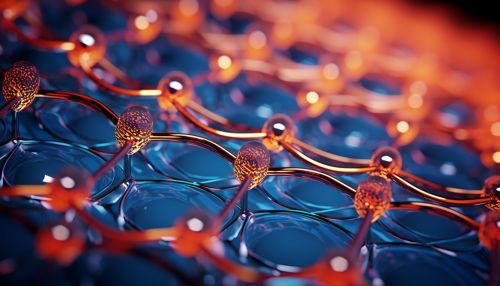Nanotribology
Introduction
Nanotribology is a branch of tribology that studies friction, wear, adhesion and lubrication at the nanoscale. The term was coined in the early 1990s to describe the emerging field of investigating tribological phenomena at the smallest scales, typically involving the manipulation and characterization of surfaces on the atomic or molecular level. Nanotribology has significant implications for the development of nanotechnology and the design of nano-scale devices.
Fundamentals of Nanotribology
Nanotribology is fundamentally concerned with the study of interfacial phenomena at the nanoscale. This includes the investigation of surface forces, adhesion, friction, wear, and lubrication. These phenomena are influenced by a variety of factors, including the physical and chemical properties of the materials involved, the environment in which the interaction occurs, and the mechanical and thermal properties of the system.


Surface Forces
Surface forces play a crucial role in nanotribology. These forces arise from the interactions between atoms and molecules at the surface of a material. They can be attractive or repulsive, and their magnitude and direction can vary depending on the distance between the interacting surfaces and the nature of the materials involved.
Adhesion
Adhesion in nanotribology refers to the tendency of different surfaces to stick together. This is primarily due to the attractive forces between the atoms and molecules at the surface of the materials. Adhesion can influence the friction and wear behavior of nano-scale systems, and understanding the mechanisms of adhesion at the nanoscale is essential for the design of nano-devices.
Friction
Friction at the nanoscale can be significantly different from macroscopic friction. The laws of classical friction, such as Amontons' laws, may not apply at the nanoscale. Instead, friction at this scale is often determined by the atomic structure of the surfaces, the presence of surface contaminants, and the type and strength of the interfacial forces.
Wear
Wear at the nanoscale is a complex process that involves the removal or displacement of material from a surface due to mechanical action. The mechanisms of wear at the nanoscale can include adhesion, abrasion, fatigue, and corrosion. The study of wear at the nanoscale can provide insights into the durability and reliability of nano-scale devices and systems.
Lubrication
Lubrication at the nanoscale involves the use of thin films of liquid or solid materials to reduce friction and wear. The behavior of these lubricants can be significantly different at the nanoscale, due to the influence of surface forces and confinement effects. Understanding the principles of nanoscale lubrication is crucial for the development of efficient and reliable nano-scale devices.
Experimental Techniques in Nanotribology
There are several experimental techniques used in nanotribology to investigate the properties and behavior of surfaces at the nanoscale. These techniques can be broadly classified into two categories: direct and indirect methods.
Direct Methods
Direct methods involve the physical manipulation and characterization of surfaces at the nanoscale. These methods include scanning probe microscopy techniques, such as atomic force microscopy (AFM) and friction force microscopy (FFM). These techniques allow for the direct measurement of surface forces, friction, and adhesion at the nanoscale.
Indirect Methods
Indirect methods involve the use of techniques that infer the properties and behavior of surfaces from the measurement of other quantities. These methods include X-ray photoelectron spectroscopy (XPS), Auger electron spectroscopy (AES), and secondary ion mass spectrometry (SIMS). These techniques provide information about the chemical composition and electronic structure of surfaces, which can be used to infer their tribological properties.
Applications of Nanotribology
Nanotribology has a wide range of applications in various fields, including materials science, mechanical engineering, physics, and nanotechnology.
Materials Science
In materials science, nanotribology can provide insights into the properties and behavior of materials at the nanoscale. This can help in the design and development of new materials with improved tribological performance.
Mechanical Engineering
In mechanical engineering, nanotribology can help in the design of mechanical components and systems at the nanoscale. This can lead to the development of more efficient and reliable nano-scale devices and machines.
Physics
In physics, nanotribology can provide insights into the fundamental mechanisms of friction, wear, and lubrication at the nanoscale. This can contribute to the development of new theories and models of tribological phenomena.
Nanotechnology
In nanotechnology, nanotribology is crucial for the design and fabrication of nano-scale devices and systems. Understanding the principles of nanotribology can help in the development of nano-scale devices with improved performance and reliability.
